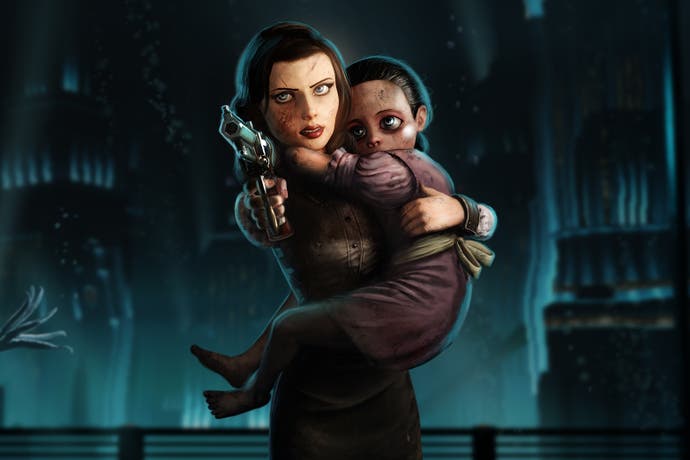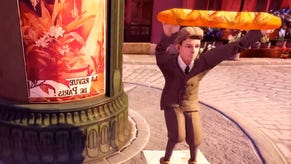BioShock Infinite: Burial at Sea - Episode Two review
We'll always have Paris.
BioShock creator Ken Levine spoke recently of how he's ready to move away from the linear narratives that he's curated for the past 19 years to embrace something new. Since the inception of the series in 2007, this tightly-scripted form of expression has been one of BioShock's great strengths and has facilitated some truly memorable narrative moments - but it has also been to the series' detriment.
This was most keenly felt in Burial at Sea: Episode One, which seemed more concerned with nailing the impact of its return to Rapture than with providing a fully-formed gameplay experience. Episode Two is free of the burden of this re-acquaintance and excels as a result. It not only concludes the DLC's story arc but ties together the events of both BioShock and BioShock Infinite, enhancing Irrational Games' overarching exploration of existentialism - while also remembering to offer players plenty to do.
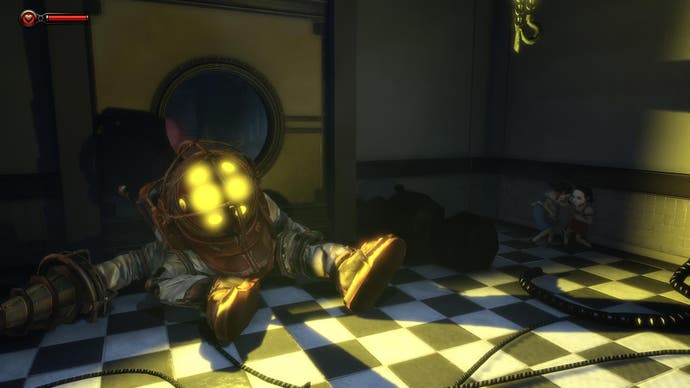
Following the dramatic conclusion of Episode One, we step into Elizabeth's high-heeled shoes to continue the story, which is more ambitious and significantly longer than its predecessor. Elizabeth has taken up Booker's mission to save a young girl named Sally, but for much of Episode Two's four-hour running time, this goal takes a back seat as the story examines a more vulnerable, less self-assured woman than the femme fatale of Episode One. Irrational also has a great deal of fun looping the narrative back on itself and weaving together strands from every major event of the BioShock timeline as some familiar names from the series' past crop up and the developer delves deeper still into the perplexing theories that it introduced at the end of BioShock Infinite.
All of this plays out against the backdrop of the bitter feud between Rapture's founder, Andrew Ryan, and the opportunistic Frank Fontaine. While the bluff and bluster of the two men's politicking no longer carries the ominous chill that it once did, the environment is again the star when it comes to effectively communicating their insidious ideals. Other relationships hinted at in Episode One are given more screen time, too, with the one-upmanship between Columbia inventor Jeremiah Fink and Rapture scientist Dr Yi Suchong proving particularly entertaining as it plays out through various audio diaries and incidental environmental cues.
The introduction of enjoyable stealth mechanics in Episode Two means you're much more likely to drink in the atmosphere of these environments as you sneak through Rapture's corridors, halls and shopping arcades. They also ensure that Episode Two plays differently to its predecessor and that there's also more scope for a second run through, in order to experience it using a different approach. There's a whole difficulty level built around the stealth mechanics, but while 1998 Mode stands as a homage to the original Thief: The Dark Project by charging you with completing the game using only non-lethal means, that game is referenced far more readily in the stealth mechanics themselves.
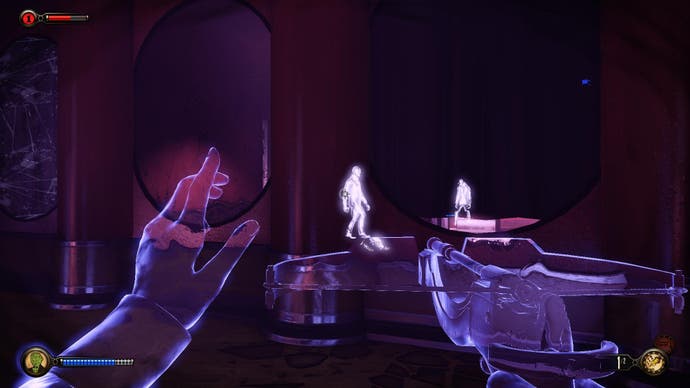
Carpeted floors muffle Elizabeth's footsteps (as would taking off her heels, but that's not an option), while crunching across shattered glass or splashing noisily through the water that's leaked into many areas of Frank Fontaine's sunken empire will alert nearby enemies. Elizabeth's crossbow is a non-lethal weapon that can be equipped with either tranquiliser or gas darts for felling single enemies or those gathered together in close proximity. Noisemakers can be obtained as a result of successful lock-pick attempts and used to distract enemies, allowing Elizabeth to slip by unnoticed or take down the splicers drawn by the din with a well-placed gas dart.
If you use these tactics in conjunction with the Peeping Tom plasmid - which offers the ability to ascertain the location of enemies through walls as well as turn invisible when standing still - and take the option to use ventilation shafts to get around, you're well equipped to stealth your way to victory. Happily, the four upgradeable Plasmids and four weapons also offer more aggressive means to complete goals, so run-and-gun can be employed as a viable if risky tactic.
However, right from the outset, Episode Two feels geared towards a slower, more considered pace, allowing for more time exploring the environment as the narrative takes you to places both new and familiar. It's difficult to say too much about the events of Episode Two without giving away some fairly major spoilers, but while the finer details of its narrative can occasionally be lost amidst quantum mechanics and existential wrangling, its broad strokes remain satisfying. Suffice to say that Episode Two's climax is suitably dramatic as the final pieces of the puzzle fall into place and Elizabeth's role in the wider BioShock universe is revealed.
Such is the impact of Burial at Sea on the entire BioShock series' narrative that it's only through experiencing it that you can hope to understand the full picture
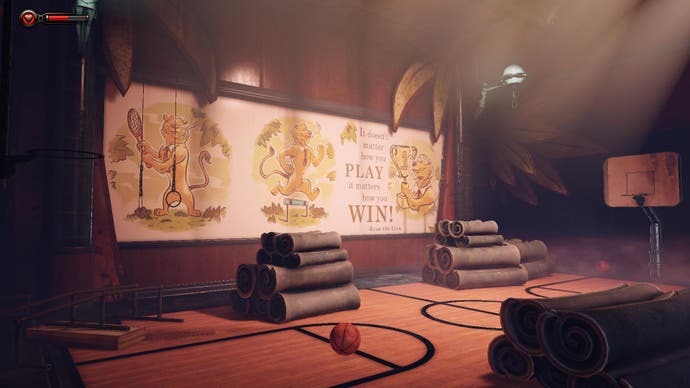
As has ever been the case with BioShock, you have to care about this side of its personality to derive enjoyment from it - and while the game mechanics are certainly stronger than in the first half of this DLC story, that's still very much the case. Such is Levine's focus on presenting his vision for this universe that it's sometimes necessary to take a particularly long ride in a lift or have control wrested away in a more obvious manner while an important conversation plays out. But the tale is an interesting one, at least. In fact, such is the impact of Burial at Sea on the entire BioShock series' narrative that it's only through experiencing it that you can hope to understand the full picture.
While its narrative achievements are significant and Burial at Sea: Episode Two is enjoyable to watch and listen to, it's also fun to play. As with Episode One, its mission objectives boil down to basic fetch-quests, but the stealth mechanics suit the mood, feel well integrated and are enjoyable. It's also a poignant release, for it's not only the concluding part of Irrational's BioShock story but the final chapter of the studio itself. Impressively crafted and polished, it's a fitting end to Irrational's body of work. The story of BioShock might belong to Ken Levine and Irrational Games rather than to its players - but it's a story that's been well worth telling.
